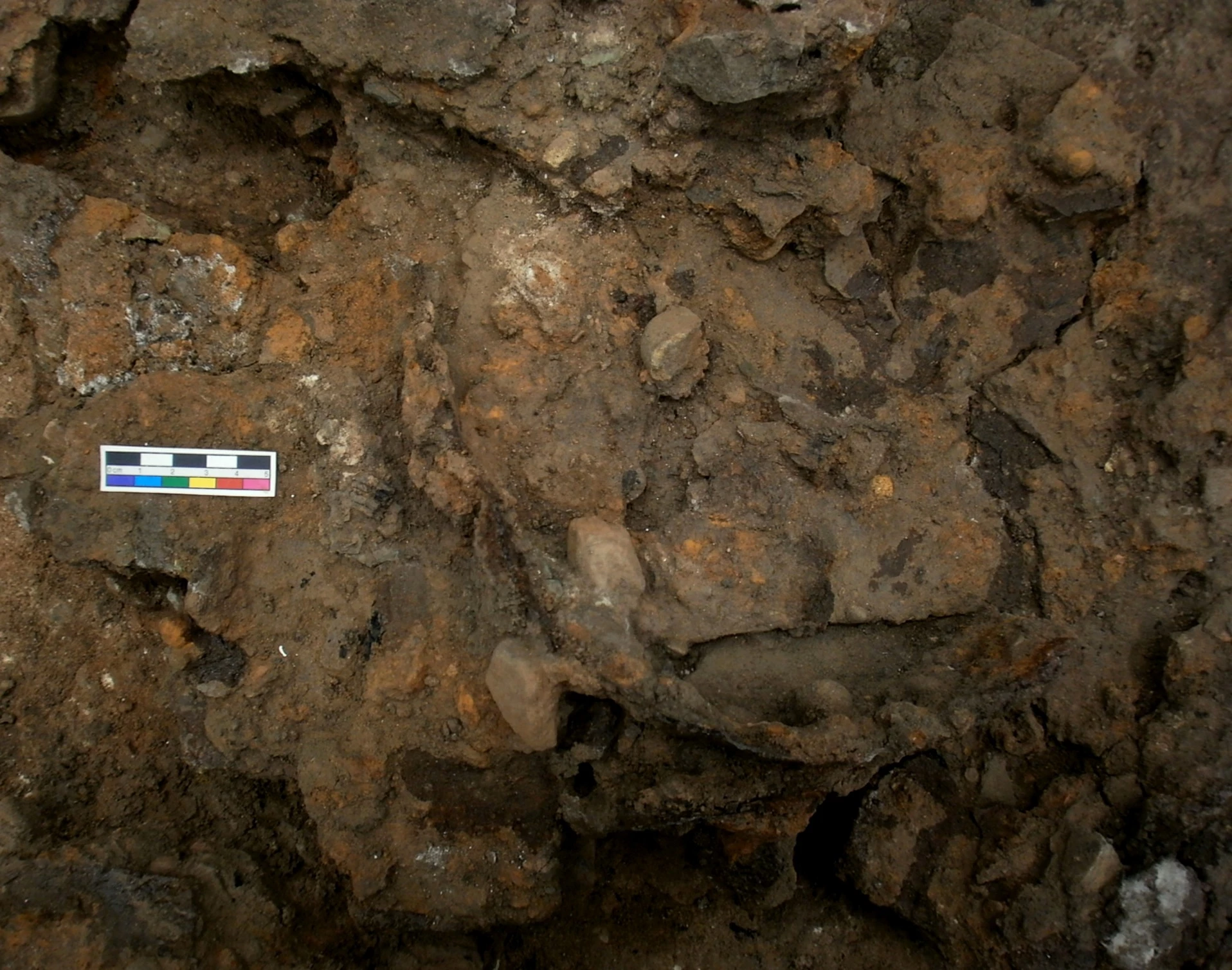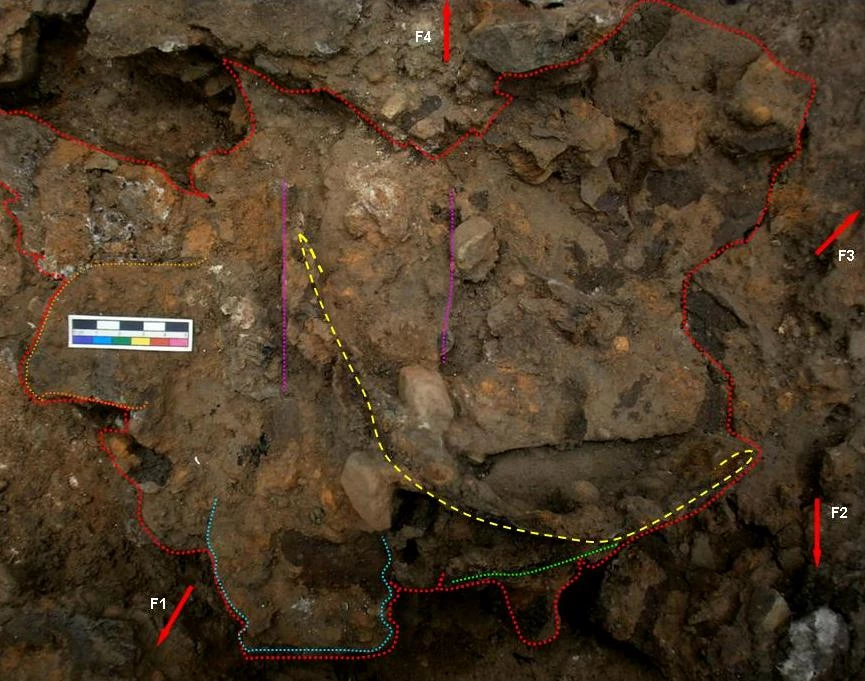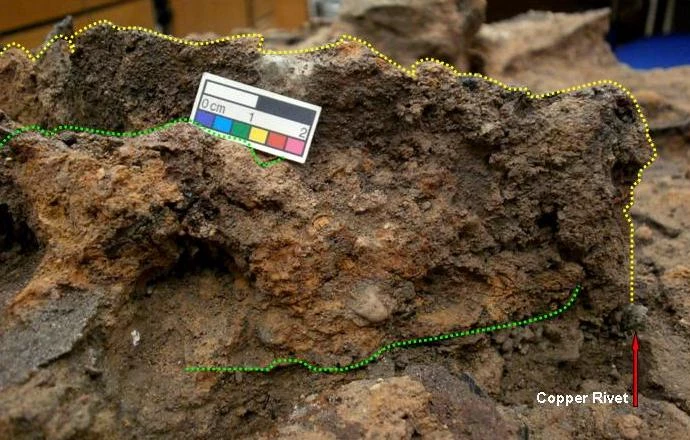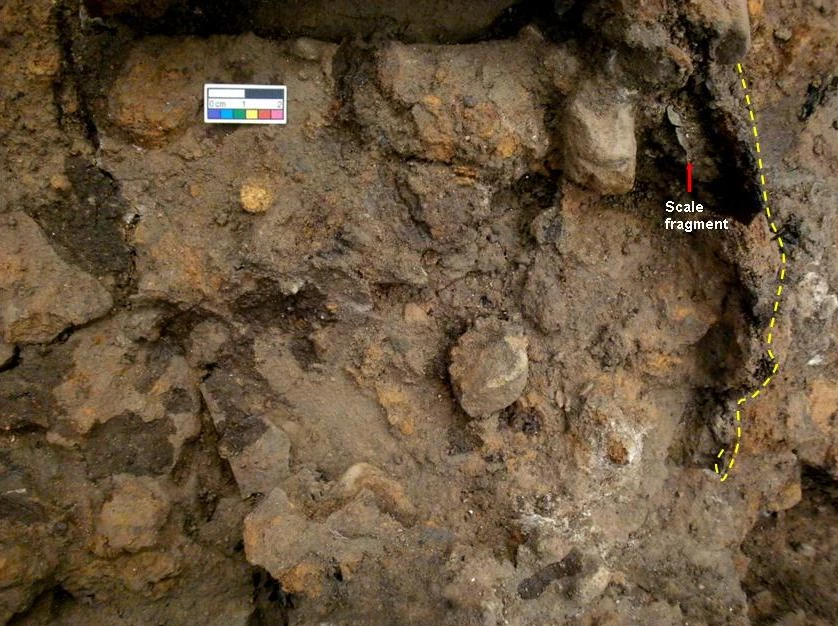Caerleon Armour: Feature 5 and the Shoulder Plate
26 October 2011
This blog entry discusses the last area of the large soil block to be micro-excavated; feature ‘5’, located in the middle of the block. The position of the other ‘features’ (F1, F2, F3 and F4) in relation to this central one can be seen in the annotated photograph of feature 5, and plates with two identifiable edges have been outlined in various colours to guide the reader’s interpretation of this area. As with ‘feature 4’, feature 5 encompasses a large cluster of over-lapping iron plate, which have deteriorated significantly. In the centre is what looks like a shoulder plate (judging by the degree of curvature) lying on its side and seen in profile.
The third photograph show the back of the shoulder plate; you can clearly see how neat the corner of this plate is (despite the condition of the metal), and as with a plate in the previous entry, the corner of the plate looks rounded. Excitingly, a copper alloy rivets rests at the plate’s edge. Readers will have noticed that few copper artefacts or armour components have been recovered from the soil block assemblage overall- the armour (at least that which has been partially excavated) was efficiently stripped of copper fittings and pieces prior to deposition.
The fourth photograph illustrates the depth of the archaeology. Additionally, behind the main shoulder plate (outlined in yellow), is what I think is a second plate from the shoulder area of the cuirass (outlined in green). These plates were probably connected to each other in antiquity by the internal leather strapping, and it looks like their relationship has been preserved in the soil. Detecting the shorter edges of the second plate is difficult, as the heavily corroded plate has disappeared into a mass of blended of soil and iron corrosion products.
Beneath the first shoulder plate lies a distinctive plate with a good, clean edge (last photograph- as before, the shoulder plate is outlined using a dashed yellow line). This plate bears lumps of brighter orange corrosion products and given their relative size and positioning, I believe that these protuberances are all that remains of the interior fittings which would have held the leather attachments.
This entry marks the end of the micro-excavation stage of this conservation project: however, a huge amount of work remains to be completed before the contents of this soil block can be fully understood. As I have repeatedly mentioned, only x-rays will be able to provide us with a clearer idea of the exact condition of the iron artefacts, and of unseen objects beneath those excavated. The next stage will be to deconstruct the block into smaller blocks, of a size that will fit in the x-ray machine camber. The easiest way to complete this will be to essentially block lift the separate ‘features’ from the large soil block.




